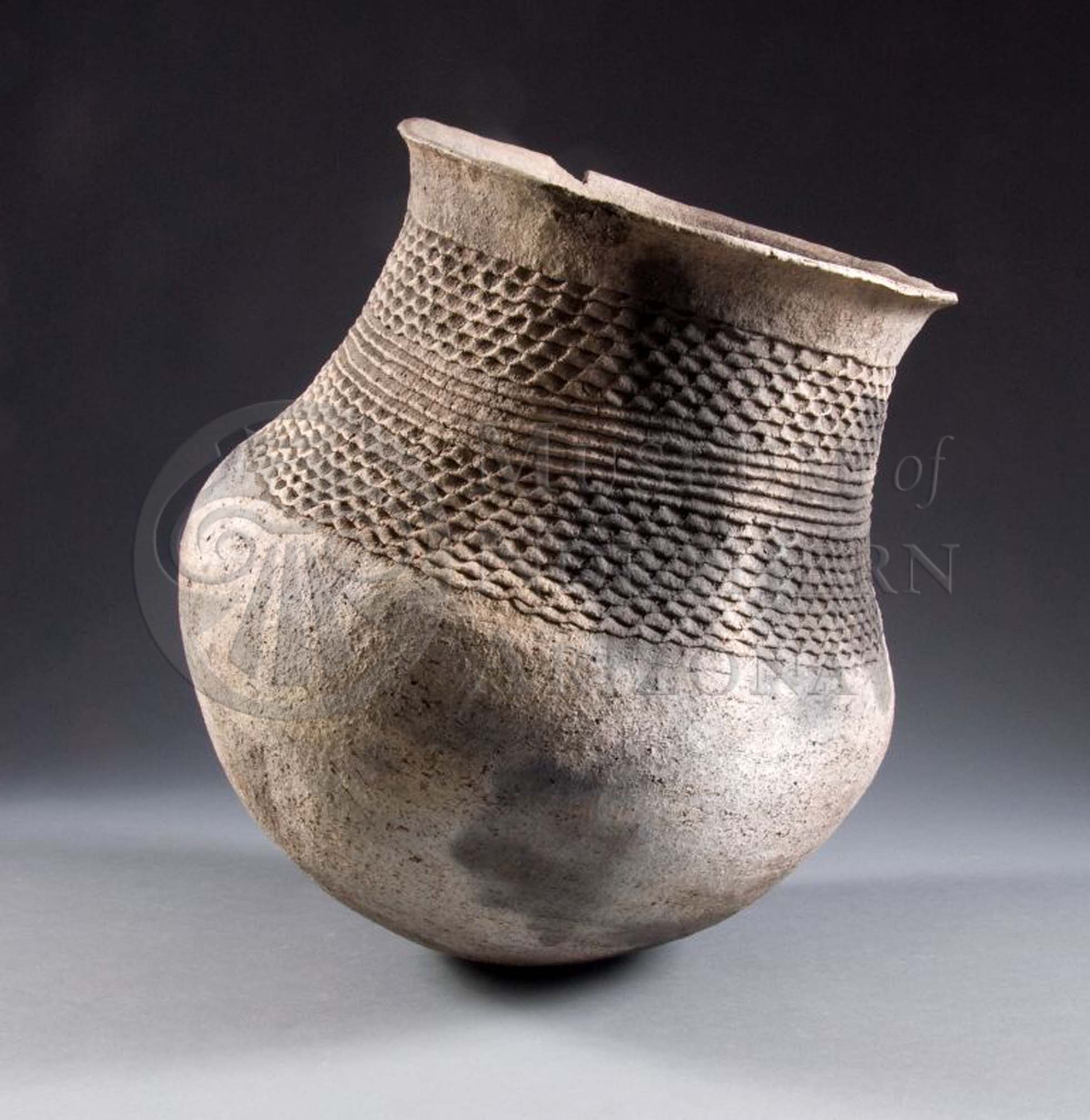
Medicine Gray jar from the Museum of Northern Arizona collections. Click the image to open the Medicine Gray gallery.
Medicine Gray is a type of Tusayan Gray ware that was produced mainly in northeastern Arizona.
Archaeological Culture: Ancestral Puebloan, Kayenta
Date Range: Kayenta Heartland: A.D. 950-1100 (Christenson 1994), Flagstaff Area: A.D. 1025-1075 (per Christian Downum, Northern Arizona University).
Construction: By coiling.
Firing: In a reducing atmosphere.
Core Color: Dark gray to light gray
Temper: Abundant medium-fine to coarse quartz sand; occasionally some feldspar; conspicuous on both surfaces.
Surface Finish: Very rough; scraped; not smoothed; not polished; often deeply pitted; scraping marks conspicuous; neck coils unobliterated on exterior surfaces; sometimes slightly finger-dented; usually varies from about 3 to 5 mm in width.
Surface Color: Gray.
Forms: Jars.
Vessel Thickness: 2.5 to 6.4 mm; average 4.3 mm.
Decoration: No painted decoration.
Comparisons: Lino Gray coils are always unobliterated over the entire surface; body and base sherds are indistinguishable. Kana’a Gray exterior neck surfaces have unobliterated coils without finger-indentations, and the coils are usually wider; body and base sherds are indistinguishable. Coconino Gray, Honani Tooled, and O’Leary Tooled have exterior neck surfaces decorated with tooling marks; body and base sherds are indistinguishable. Kiet Siel Gray usually has coarser temper with opaque angular fragments, surfaces that are less well-smoothed (usually bumpy), coils that are sometimes not quite obliterated, and thicker vessel walls.
Compiled from the following sources:
Christenson, Andrew. (1994) A Test of Mean Ceramic Dating Using Well-Dated Kayenta-Anasazi Sites. Kiva 59(3).
Colton, Harold S. (1955) Pottery Types of the Arizona Strip and Adjacent Areas in Utah and Nevada. Museum of Northern Arizona Ceramic Series No. 1. Flagstaff, Arizona.
Compiled by:
April Peters, Northern Arizona University Anthropology Laboratories.
